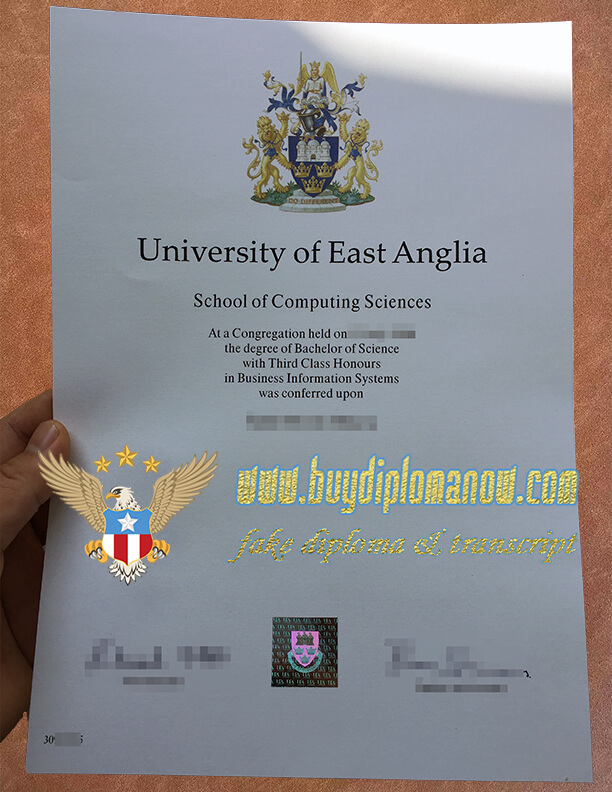
The University of East Anglia (UEA), also translated as the University of East Anglia, was founded in 1963 and is a first-class institution located in Norwich, England. How to make the University of East Anglia Fake Degree? Where to Buy a University of East Anglia Fake Diploma? Buy UK Fake Degree. How to order the University of East Anglia Official Transcript?
The school is one of the most important scientific research centers in Europe and the world, with a strong international reputation. Many scientists, economists, writers, filmmakers, and actors around the world have graduated from this school. Notable alumni include Nobel laureates Paul Nurse and Michael Horton. Kazuo Ishiguro, winner of the 2017 Nobel Prize in Literature, and Ian McEwan, a famous British writer, etc.
Where to buy a University of East Anglia diploma?
The school was rated as a gold medal university in the TEF (Teaching Excellence Framework) issued by the Royal Ministry of Education in 2017 and ranked 10th in the UK in the REF UK University Research Strength Rankings, and 82% of its research output was rated as “World Grades ‘leading’ and ‘internationally excellent’. It’s professional social work and social policy rank 4th in the UK, and international development studies rank 4th in the UK. Regional studies rank 5th in the UK, food science ranks 8th in the UK. And English literature/environmental science/chemistry majors are all 10th in the UK. Buy UEA Fake Diploma, Buy UK Degree certificate, How to Make the UEA Hologram? Where to Buy the UEA Stamp? buy a fake diploma, fake diploma certificate, buy a fake degree.
The school has the world-renowned Sainsbury Center for the Visual Arts. It is also the most important National University Art Gallery in the UK. Housing a variety of world art from renowned art collectors Sir Robert and Lady Sainsbury. The Center is home to the Sainsbury Institute of Japanese Arts and Culture, the UK’s leading institution for the study of Japanese arts. The Lisa Sainsbury Library has the UK’s most comprehensive library of Japanese visual arts. The Institute offers research courses on the history of Japanese art in collaboration with the University’s Center for Japanese Studies. He has worked closely with the British Museum, SOAS, the University of London, and the University of Tokyo in Japan.


